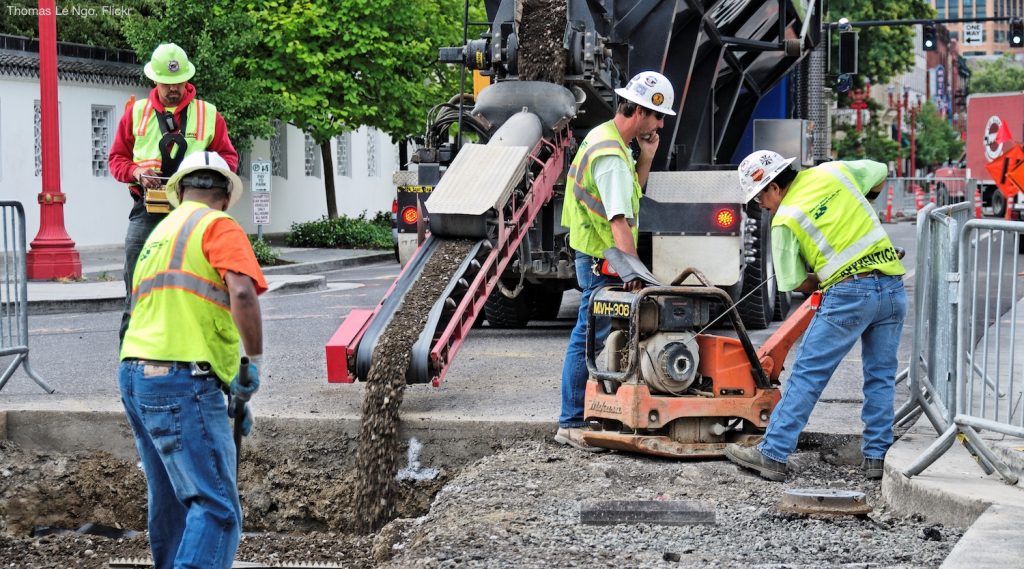It’s time for Congress to actually set a goal for repairing our infrastructure
We shouldn’t build new roads before fixing the ones we have. But that’s not how the federal transportation program is designed. Despite funding boosts, our backlog of maintenance needs have only increased because there is no requirement that federal funds be spent on repair.
The concept of fixing what you have before buying something new—when it comes to really expensive things—is pretty intuitive for most people. You should probably repair your leaky roof before building a new addition. You’d likely buff out that dent in the car you already own instead of buying a brand new one.
But what’s obvious to everyone is not obvious to lawmakers. Under our current federal transportation law, states are allowed to spend federal funding on building new (and often unnecessary) roads before fixing decaying ones, all without providing a plan for how they will maintain these new roads in the future.
This leads to massive and unsustainable fiscal problems.
According to our report Repair Priorities that we co-authored with Taxpayers for Common Sense, states spent $21.4 billion on average on road repair annually and $21.3 billion annually on road expansion between 2009-2014. These investments in expansion don’t just redirect funds away from much needed investments in repair; they continually grow our annual spending need, widening the gap. Every new lane-mile of road costs approximately $24,000 per year just to preserve in a state of good repair—to say nothing of the long-term lifecycle costs and required eventual major rehabilitation projects in the future. By expanding roads—and neglecting the ones we have—we are borrowing against the future while letting our existing assets wither.
Yet lawmakers insist that the reason why our transportation infrastructure is crumbling is not how we (poorly) spend our money, but the amount of it. “We need more money,” they say. “It doesn’t matter how it’s spent!”
These cries for more money echo throughout Capitol Hill every five to six years when surface transportation funding needs to be reauthorized. I described this Groundhog Day-esque phenomenon in our blog post announcing our three new principles for transportation investment:
Every interest group, every legislator, every witness before a congressional committee talks about the need to “repair our crumbling roads and bridges.” On cue, congressional leaders call for more money for the federal transportation program. And then no one makes any changes to policy to guarantee that this increased funding will actually be prioritized toward reaching a state of good repair. In fact, as we found in Repair Priorities, Congress has gone aggressively in the opposite direction by allowing states to do whatever they wish with the increase in funding. Many times, states use this money to build new infrastructure while letting their existing assets crumble. And then the same actors are back before Congress, talking about the need for more money to repair their “crumbling” infrastructure. Rinse and repeat.
As the current transportation law, the FAST Act, expires next year, it’s time to do something different. We simply can’t afford to waste billions of dollars every single year.
That is why we urge Congress to make a hard and fast commitment to cutting our maintenance backlog in half. We don’t want Congress to create some new federal program to achieve a state of good repair, or authorize more transportation funding. Simply setting a goal for our current dollars would be a sea change.
Congress can organize the program in any number of ways to cut the backlog in half. And if cutting the backlog in half over six years is the wrong target, Congress can tell us what the right target should be.
But they should have to tell us precisely where we will be in addressing our state of repair when this bill expires in five or so years, not just how much money will have been spent. Until then, we believe cutting the maintenance backlog in half is an achievable goal and we expect Congress to finally tie federal funding to their rhetoric.
Read our three policy recommendations for cutting the maintenance backlog in half.





















Pingback: Transportation For America – Our three policy recommendations for cutting the maintenance backlog in half
Pingback: Transportation For America – Three things we learned from talking about maintenance this week